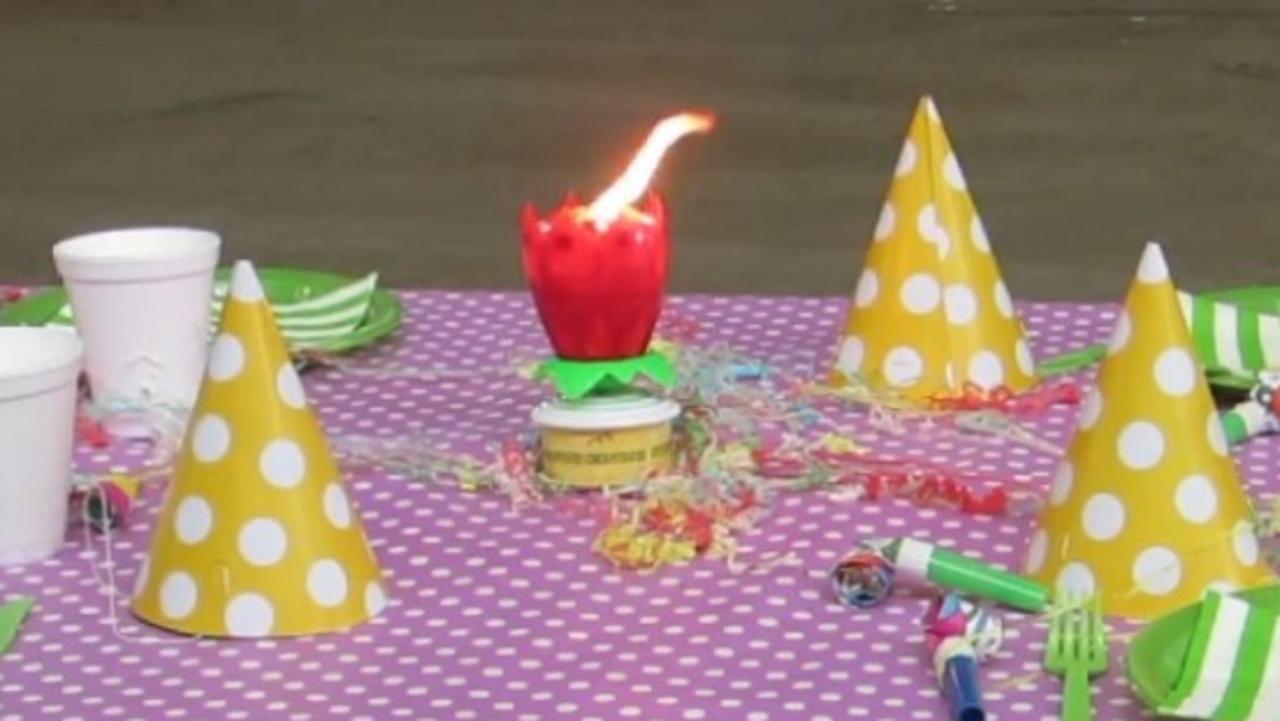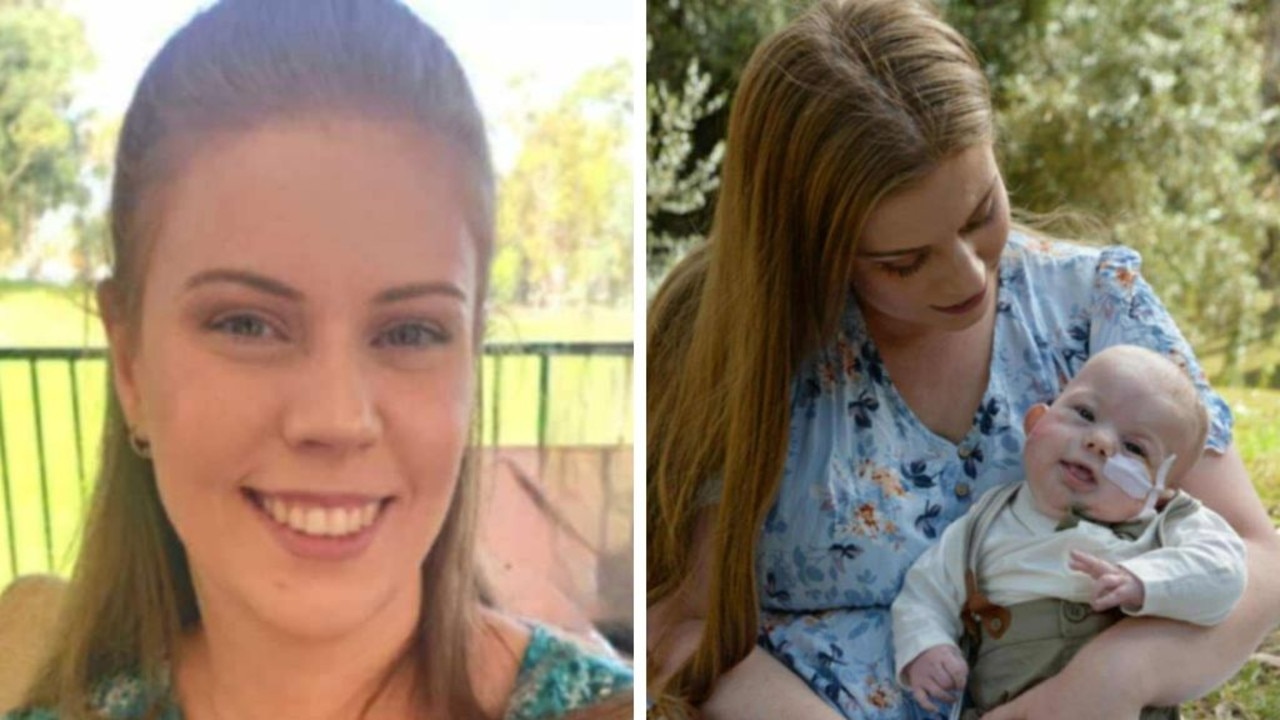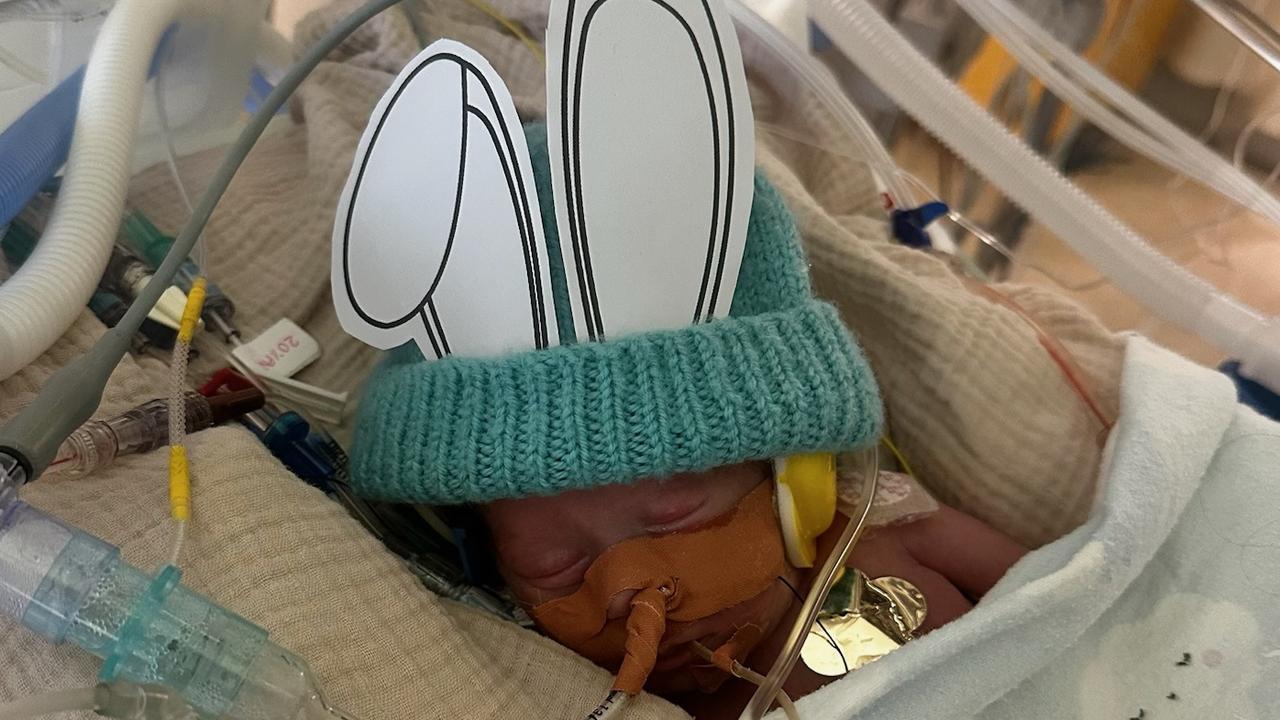Australian women over 40 are having more babies than ‘teen mums’
The Australian birth rate has declined to its lowest level ever recorded – but data shows an unexpected age group has had a spike in its fertility rate.
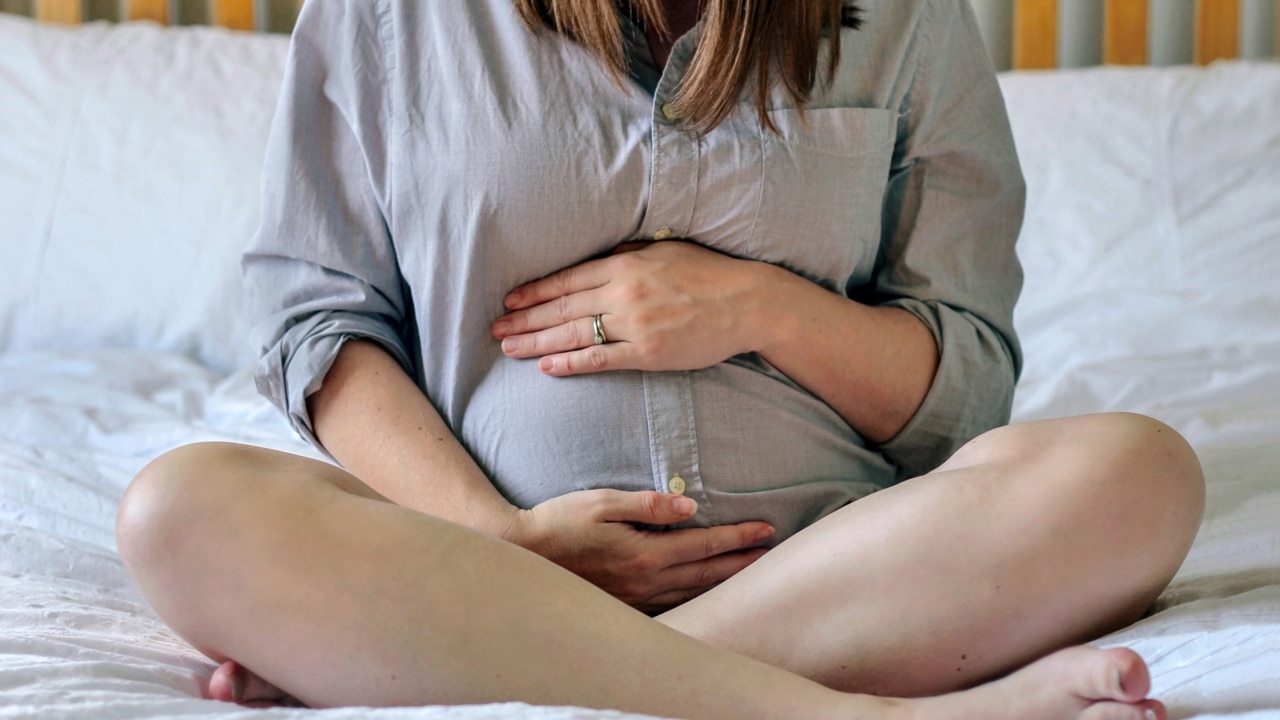
Parenting
Don't miss out on the headlines from Parenting. Followed categories will be added to My News.
For the first time in history, Australian women over 40 are having more babies than “teen mums”.
Data published by the Australian Institute of Health and Welfare (AIHW) in its Australia’s mothers and babies report shows the proportion of teenage mums (aged under 20) has decreased over time, dropping from 3.8 per cent in 2010 compared to 1.6 per cent in 2022.
Meanwhile, the proportion of mothers aged 40 and over has increased from 4.1 per cent in 2010 to 4.9 per cent in 2022.
While the numbers might not seem like much, these stats represent a huge cultural shift, one that has emerged due to a number of different factors, said Professor Ledger, Co-Chief Medical Advisor at WHEN Fertility.

“It’s a combination of better understanding of contraception and better access to education for young women,” he told news.com.au.
“There’s also more cognisance of the pressures of life, career, economics on couples – that are leading people to defer childbirth until they’re older.
“Women and men these days that people don’t want to spend the ‘best years’ of their lives raising and paying for a large number of children anymore.”
But while the average age of mothers has been steadily rising over time, up from 30.0 in 2010 to 31.2 in 2022, the report also highlights Australia’s plummeting birth rate.
In 2023, it declined to the lowest level ever recorded of 1.5 births per woman, sparking fears Australia is in the grips of a “baby bust”.
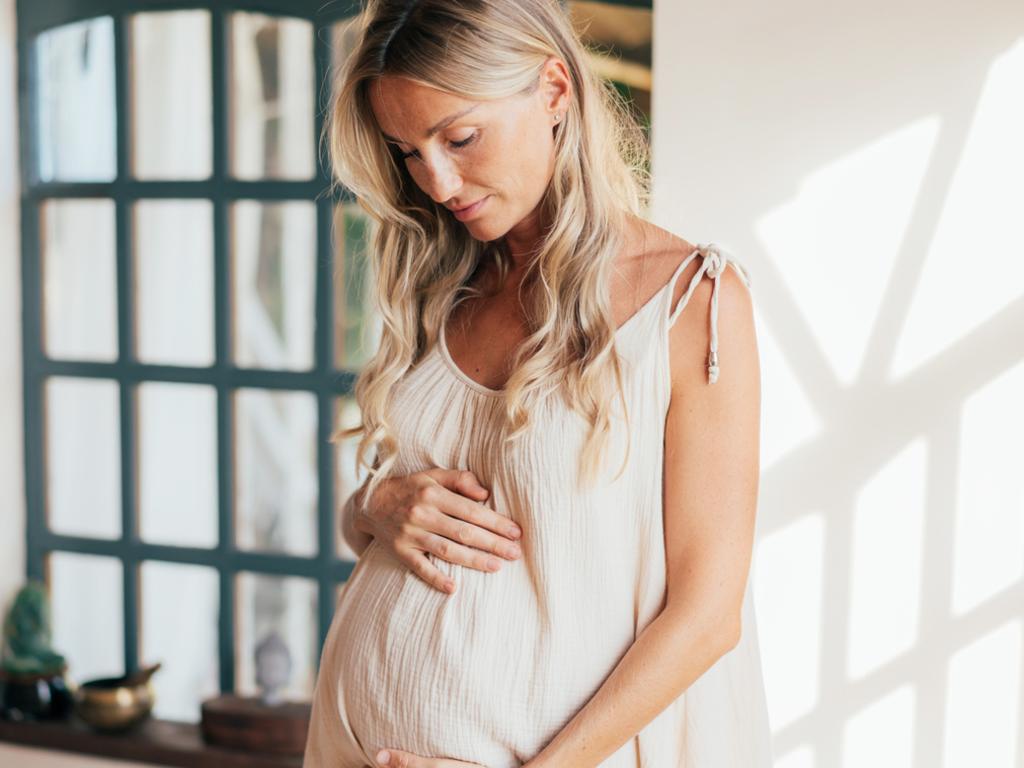
Edith Gray, a professor at Australian National University’s School of Demography, said AIHW’s findings show that babies are “more likely to be born to mothers aged 40+ and less likely to be born to teenagers in 2022 than in 2010” – but stressed the most reliable data lies in age specific fertility rates, which are provided by the Australian Bureau of Statistics (ABS).
“Fertility rates show increases and decreases in the rate of births by age group, and can be compared to other age groups and over time,” she told news.com.au.
“Whereas age-specific-fertility rates (ASFR) are a measure of the number of births per 1000 women in that age group.”
Using ABS’ Births, Australia figures from 2010 onwards, she was able to identify several “interesting patterns” in the way we’re having children.
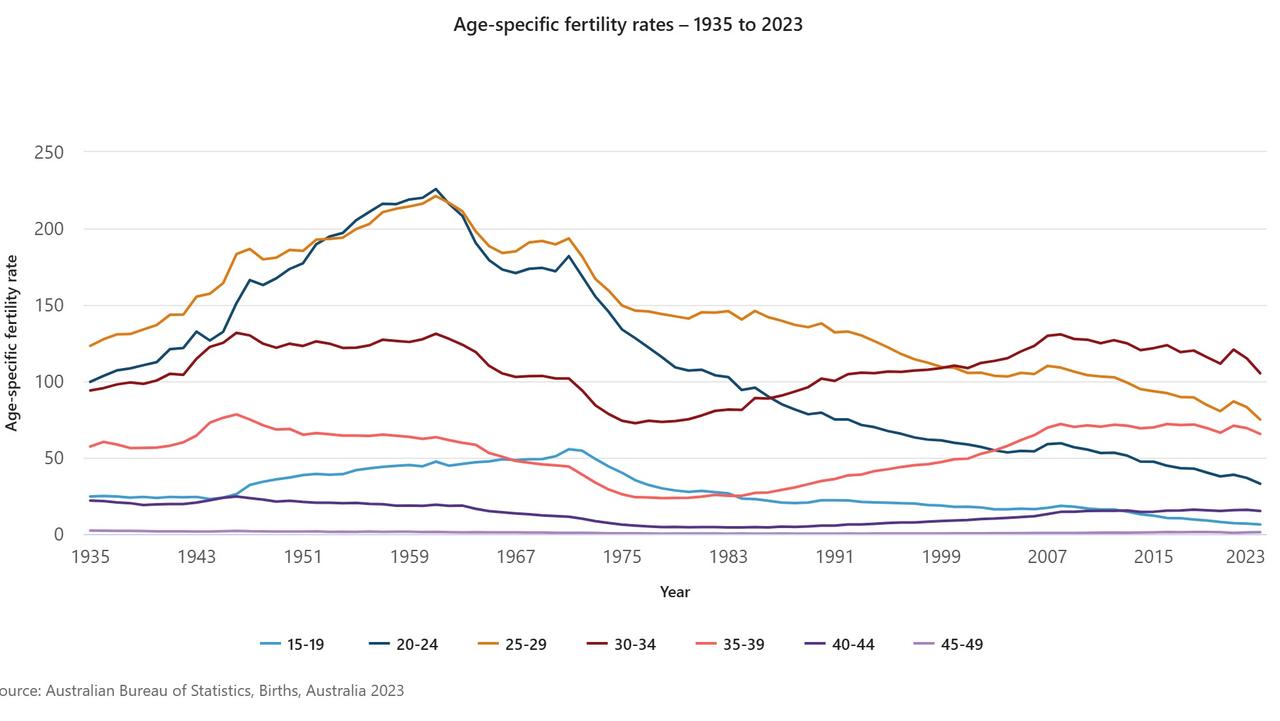
“What it shows is that the only age group which has an increased fertility rate between 2010 and 2023 are the 45-49, which is also the age group with the lowest fertility (an ASFR of 0.9 per 1000 in 2010, and 1.2 in 2023),” she said.
“The fertility rate of this age group is also very small in comparison to all other age groups (except the 15-19 year olds in 2023).
“The ASFR for 40-44 was 15.1 in 2010 and 2023, although it went very slightly up and down in the years in-between.
“What the data also shows is that fertility is continuing downwards for the 15-19 year olds (16.7 per 1000 in 2010, down to 6.2 in 2023), and 20-24 year olds (55.3 down to 32.9). ASFR is also heading downwards for the 25-29 year olds (104 per 1,000 in 2010, to 74.9 in 2023).
“While rates of childbearing in the 30s are fairly flat.”
Declining birth rates can have major impacts on society, she added, with solid arguments it can be both harmful and beneficial to the country’s economic, political and ideological future.
But despite more and more people delaying parenthood, progression in fertility treatments have also opened up the potential to welcome children later in life.
“Advancements in fertility treatments, such as improved embryo culture techniques, enhanced embryo freezing protocols, and genetic testing, have significantly improved outcomes for women of advanced reproductive age,” Emma Ebinger, National Scientific Director at Adora Fertility, told news.com.au.
“The success of donor egg programs has also allowed more women over 40 to have children. “Given current social trends, such as delayed relationships and financial considerations this shift toward later motherhood is likely to continue.”
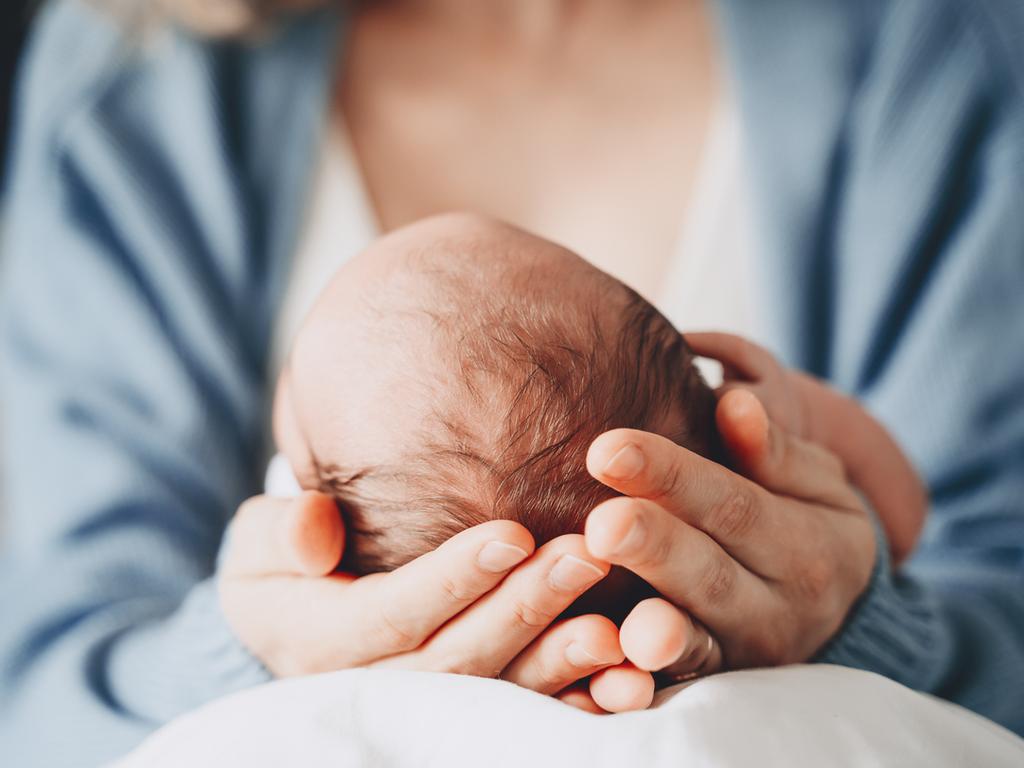
Indeed, it’s not just Australia that is seeing a similar “historical change”, with a recent report from the Centers for Disease Control and Prevention (CDC) revealing more babies are being born to women over 40 than to teenagers in the US.
The American figures, published in March, show births to women under 20 have been steadily declining for decades — dropping a whopping 73 per cent since 1990.
Meanwhile, births among women 40 and older have surged 193 per cent during that same time.
In 2023, 4.1 per cent of all births were to women over 40, just edging out teen births at 4.0 per cent.
Originally published as Australian women over 40 are having more babies than ‘teen mums’




